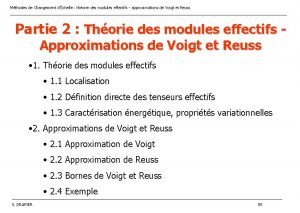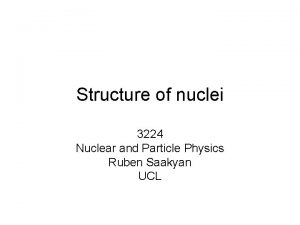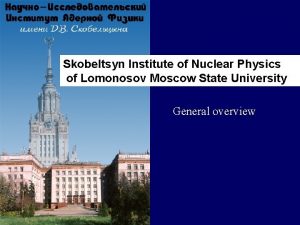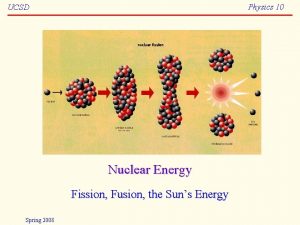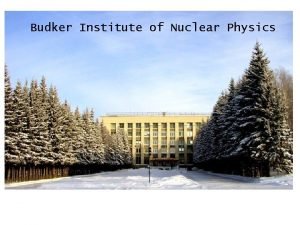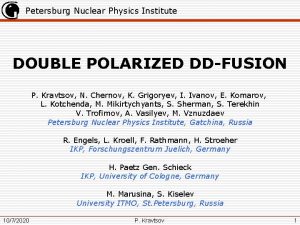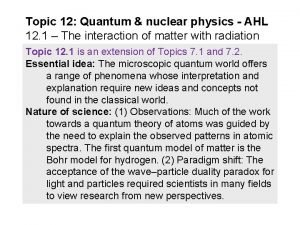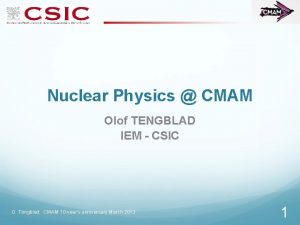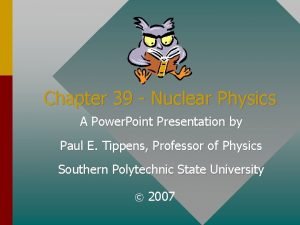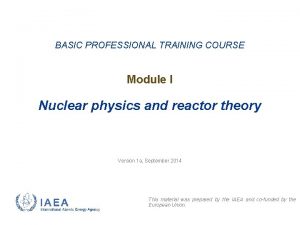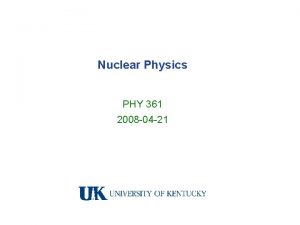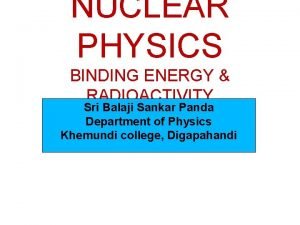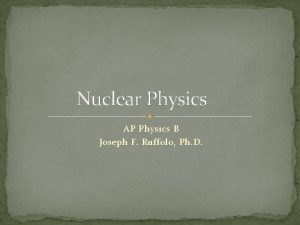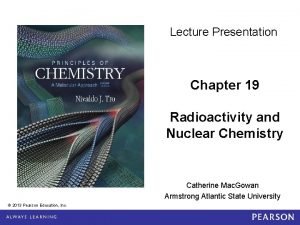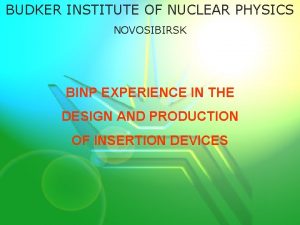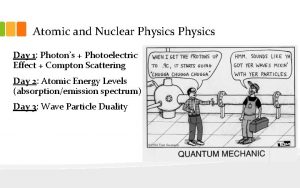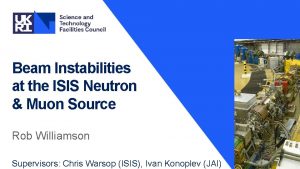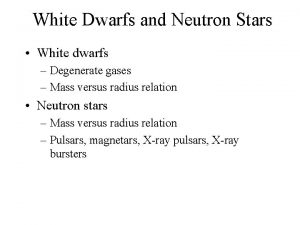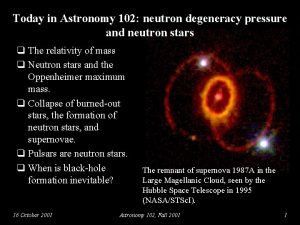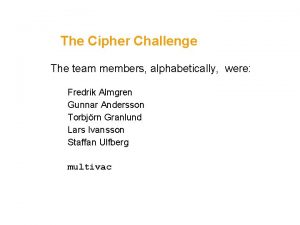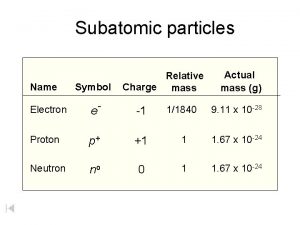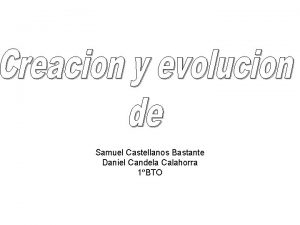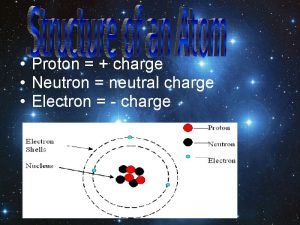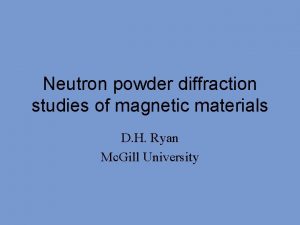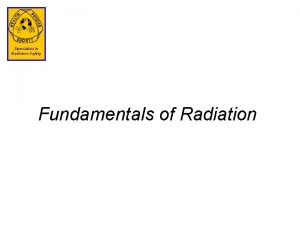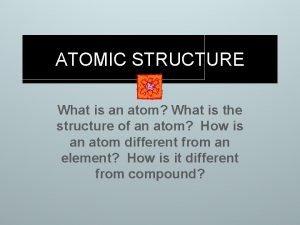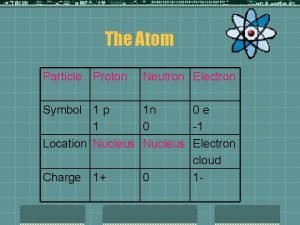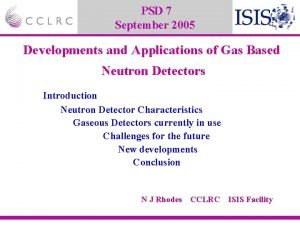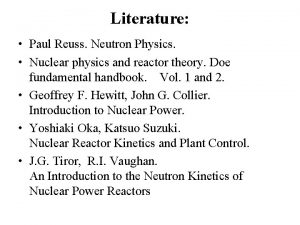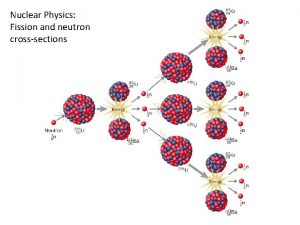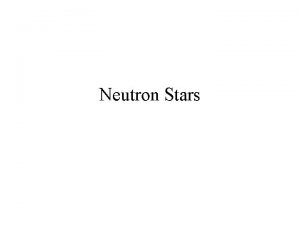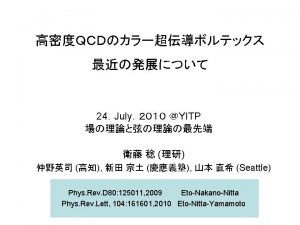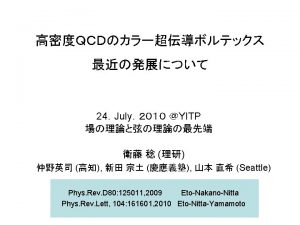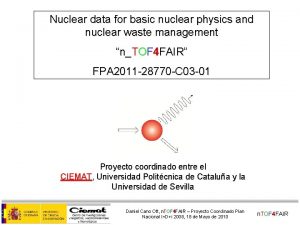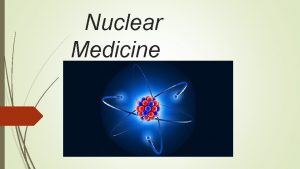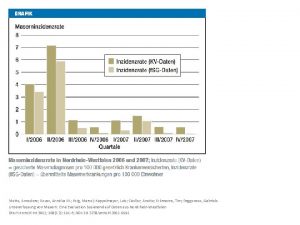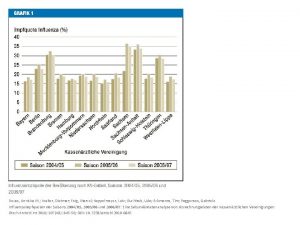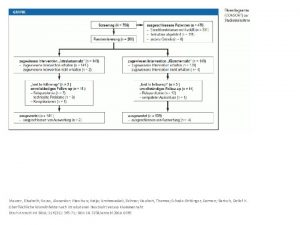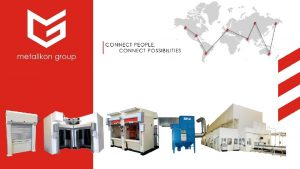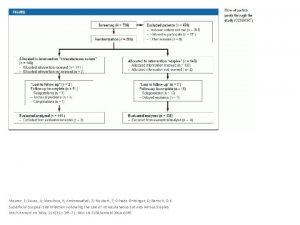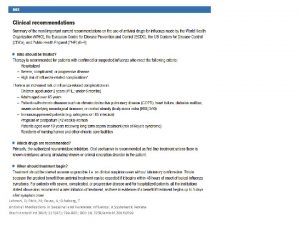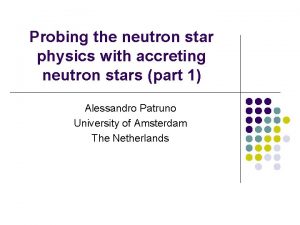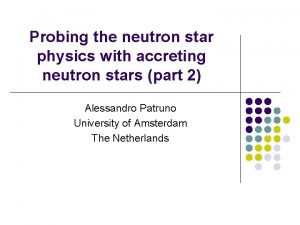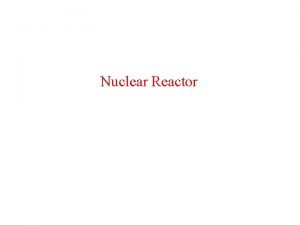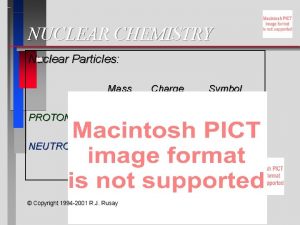Literature Paul Reuss Neutron Physics Nuclear physics and



































- Slides: 35

Literature: • Paul Reuss. Neutron Physics. • Nuclear physics and reactor theory. Doe fundamental handbook. Vol. 1 and 2. • Geoffrey F. Hewitt, John G. Collier. Introduction to Nuclear Power. • Yoshiaki Oka, Katsuo Suzuki. Nuclear Reactor Kinetics and Plant Control. • J. G. Tiror, R. I. Vaughan. An Introduction to the Neutron Kinetics of Nuclear Power Reactors

Main tasks of reactor control: • maintaining the average reactor power at a predetermined level by suppressing its unauthorized deviations with the help of feedback devices that affect reactivity; • increase in reactor power at a rate that guarantees the possibility of technological control and safe intensity of the nuclear chain reaction; Control in safety 2

• reduction in reactor power at a rate that ensures the decay of transient processes correlated with the process of changing the neutron power; • change in the preset level of stabilization depending on external requirements with respect to the reactor; • reduction of stabilization level of reactor power to an acceptable level in case of equipment failure; Control in safety 3

• control of spatial distribution of energy release in the core (axial offset control); ; • ensuring the stability of the reactor by operative correction of its unsatisfactory feedbacks (if any); • emergency termination of the nuclear chain reaction (reactor shutdown) to protect people and space surrounding the reactor if there is a risk of emergency (emergency protection). Control in safety 4

• Emergency protection from "reactivity" accidents associated with emergency protection technology is a very special control task: • this task is solved on the basis of open control principle: • the applied control effect in the form of introduction of negative reactivity by means of regulating units can not be adjusted depending on the result, which is the power reduction at the extremely accelerated rate, that is, in case of emergency. Control in safety 5

Physical effects in the formation of control actions fundamentally possible variants of effets on reactivity (for power control): – direct change of the neutron field of the reactor; – pressure change above the core; – change of the flow rate of the coolant through the core; – change of core temperature; – change of rector power. Control in safety 6

A direct change in the number of neutrons in the core can be achieved by the following technological methods: – introduction of substances capable of absorbing neutrons into the core or removal from the core; – placement of absorber substances in the core with a predetermined time behavior of the absorption efficiency (use of burnable absorbers); Control in safety 7

– technically organized neutron leakage from the core by an arbitrary change in the properties of the reflector; – prompt introduction of nuclear fuel into the core or removal from the core Control in safety 8

• If neutron absorbers are structurally designed for prompt introduction into the core and removal from the core, they are called operating devices or, more often, regulating units. • The design of the regulating units is determined by the specific type of the reactor. • In any case, their "element base" is absorbing elements of a solid consistency. Control in safety 9

• Effectiveness of regulating units (or of a separate absorbing element) relates to the basic concepts connected with physical effects which characterize regulating units and absorbing elements i. e. that part of reactivity which it can compensate when introducing into the core. • Usually this part is small and is about 1%, therefore the number of regulating units is usually tens or even hundreds. Control in safety 10

• From the point of view of the desired efficiency control with the help of regulating units, the introduction of positive and negative reactivity of the reactor should have the behavior of an instantaneous jump: Control in safety 11

• The nature of real processes is associated with inertial physical effects (with inertness of the mechanical movement of the regulating units and the inertia of the reactor core) and has the form of the following transient processes Control in safety 12

• Transient processes with increasing reactor power as a response to control actions caused by various positions of regulating units, Control in safety 13

• Transient processes with a decrease in reactor power in response to control actions caused by the position of the regulating units Control in safety 14

• Variable dynamics of the reactor is primarily manifested in the variability of ρ(t), and the latter, in turn, affects the power and other technological parameters. • The effects of reactivity can also be considered as factors of feedback effects. • In this "circular" mutual influence, physical effects of the reactor nonstationarity are manifested. Control in safety 15

Main physical processes explaining the essence of the reactor feedback: • effect of burnout and conversion of nuclear fuel. • poisoning and slagging effect of the reactor. • powerful reactivity effect. • temperature-density and temperature effects of reactivity. Control in safety 16

Reactor control technologies • To control and monitor a nuclear reactor in order to develop adequate control actions, it is necessary to primarily measure such parameters as • power, • reactor period, • reactivity. Control in safety 17

• Measurement of these parameters is a very difficult task, without the solution of which power regulation is impossible. • For this purpose, in the rector there is special equipment for neutron and physical measurements, • neutron flux monitoring equipment, • system of intra-reactor control; • various measuring and computing systems. Control in safety 18

• To measure nuclear power, taking into account its proportionality of neutron flux density, so-called neutron detectors (ND) are used, located inside the core and outside the reactor vessel. • Accordingly, they are called in-core and excore neutron detectors. • In-core neutron detectors are located in the central tubes of the fuel magazines selected for this purpose. Control in safety 19

• Ex-core neutron detectors are placed in the concrete protection channels (where the number of leak neutrons is proportional to the number of neutrons in the core). • In-core neutron detectors are smallsized, their assemblies from several sensors, having a vertical arrangement, form neutron measuring channels. Control in safety 20

• Ex-core neutron detectors, moved in the vertical direction by means of the drum-cord mechanisms, constitute measuring channels of nuclear radiation. • Ionization chambers with elements compensating for gamma backgroundneutron compensating cameras (NCC) -are used as sensors of ex-core neutron detectors. • As the In-core neutron detectors sensors, beta-emission neutron detectors are used (the outdated name is "direct charge detectors"). Control in safety 21

The operating principle of β-emission neutron detectors Control in safety 22

Beta-emission neutron detectors: • Under the influence of neutrons, the emitter from the rhodium wire emits electrons that fly through the insulator and enter the collector. Electric current, proportional to the neutron flux density, flows in the circuit. Control in safety 23

• To register ionizing radiation, various methods are used based on measuring the result of interaction of radiation with matter. • For example, gamma quanta form fast electrons in the detector material due to the photoelectric effect, Compton effect or electron-positron pair production. These electrons are recorded due to the ionization caused by them. Control in safety 24

• Neutrons are detected by a two-step process, since the interaction between neutrons and electrons, due to their magnetic moments, is very small and can not lead to the ionization of atoms when neutrons pass through matter. • Neutrons can be registered as a result of a nuclear reaction, accompanied by the emission of charged particles, which are fixed by the detector. • Thus, for neutron detection it is necessary to have a radiator containing nuclei by which a reaction occurs accompanied by the emission of charged particles. Control in safety 25

• The operating principle of the ionization chamber Control in safety 26

• Due to the fact that it is necessary to register neutron radiation and, in some cases, gamma radiation in the operating reactor, the number of methods that have found practical application is limited. • As "detecting", reactions (n, a) and fission reaction of uranium-235 (fission chambers) are most often used. • To detect secondary particles (а-particles, fission fragments or electrons) formed as a result of the interaction of neutrons or gamma quanta with matter, the ability of charged particles to ionize gases is usually used. Control in safety 27

• By placing the electrodes in the form of two plates or cylinders in a gas containing volume and applying an electrical potential difference to them, we obtain current proportional to the number of charged particles and their ionizing ability. • Such equipment for detecting particles has been termed an ionization chamber. • Ionization chambers (IC) are used for detecting neutrons, which are divided into pulse an d current chambers. Control in safety 28

• In a pulsed type chamber, each detected particle produces a current pulse (counters). • Current chambers are devices that record the average level of radiation. The current of the ionization chamber is determined by the intensity of the radiation. • As a rule, ionization chambers and counters are used to measure neutron flux outside the core (in dry protection), that is, leakage neutrons from the core are measured. • The operation of ionization chambers is based on the collection of ions that arise when passing through a chamber of ionizing radiation. • When gas is irradiated with ionizing radiation, two processes occur: ionization and recombination. Control in safety 29

• When a charged particle passes through a substance, its electric field interacts with the electron shell of the atoms. As a result, some electrons are detached from the atoms and positive ions are formed on the path of the particle. • When passing through matter, electromagnetic radiation (y-quanta) is absorbed as a result of Compton scattering and the formation of electron-positron pairs. In each of these processes, charged particles (electrons, positrons) appear that are capable of ionizing atoms of the medium. Control in safety 30

• The principle of operation of neutron ionization chambers is based on the ionizing effect of particles arising from reactions of the (n, a), (n, p), (n, f) type. • Chambers with reaction (n, a) are boric chambers, with reaction (n, p) - helium chambers with reaction(n, f) – fission chambers. Control in safety 31

• In general, the advantage of ionization chambers is lack of inertia. • The disadvantages - burnout and the need for high voltage to power the chambers, which leads to increased requirements for their isolation. Control in safety 32

• Ionization chambers of the following types are used: • Neutron chambers - with gaseous radiator • Сhambers of normal hardening - chambers with radiators in the form of hard coating • Neutron compensating chambers - neutron flux measurement chambers compensated for the influence of y-background (both with hard coating and with a gaseous radiator). Control in safety 33

• To register neutrons in the ionization chamber, a radiator substance is introduced - a layer of amorphous boron or fissile material deposited on one of the electrodes or on both. • It is customary to call an ionization chamber with a fissile material layer a fission chamber. • Gamma quanta that enter ionization chamber form electrons in gas and electrode substance. Secondary electrons ionize gas and electric current is created in the circuit. • Since neutron radiation in the reactor is always accompanied by gamma radiation, special measures must be taken to separate the signal from the neutrons and compensation of gamma background. Control in safety 34

• The operating principle of the ionization chamber Control in safety 35
 Borne de voigt et reuss
Borne de voigt et reuss Lesson 15 nuclear quest nuclear reactions
Lesson 15 nuclear quest nuclear reactions Fisión nuclear vs fision nuclear
Fisión nuclear vs fision nuclear Quantum and nuclear physics
Quantum and nuclear physics Magic nuclei
Magic nuclei Skobeltsyn institute of nuclear physics
Skobeltsyn institute of nuclear physics Nuclear energy in physics
Nuclear energy in physics Scattering cross section in nuclear physics
Scattering cross section in nuclear physics Budker
Budker Petersburg nuclear physics institute
Petersburg nuclear physics institute Quantum nuclear physics
Quantum nuclear physics Nuclear physics
Nuclear physics Nuclear physics topics for presentation
Nuclear physics topics for presentation Nuclear physics
Nuclear physics Nuclear physics
Nuclear physics Nuclear physics
Nuclear physics Nuclear physics b
Nuclear physics b Magic numbers in nuclear physics
Magic numbers in nuclear physics Nuclear physics
Nuclear physics Budker
Budker Nuclear physics day
Nuclear physics day Isis neutron and muon source
Isis neutron and muon source Angular momentum
Angular momentum Neutron degeneracy pressure definition
Neutron degeneracy pressure definition Cipher neutron
Cipher neutron Proton symbol relative charge and location
Proton symbol relative charge and location Candela y neutron
Candela y neutron Proton charge
Proton charge Neutron star
Neutron star Magnets for neutron diffraction
Magnets for neutron diffraction Find the number of protons c
Find the number of protons c Neutron emission
Neutron emission Neutron degeneracy pressure
Neutron degeneracy pressure Mass of neutron
Mass of neutron Symbole proton neutron electron
Symbole proton neutron electron Spallation neutron source
Spallation neutron source
